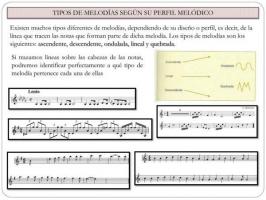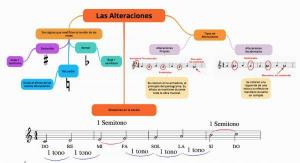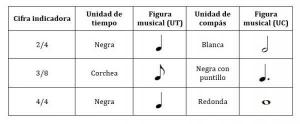All TYPES of musical CADENCE
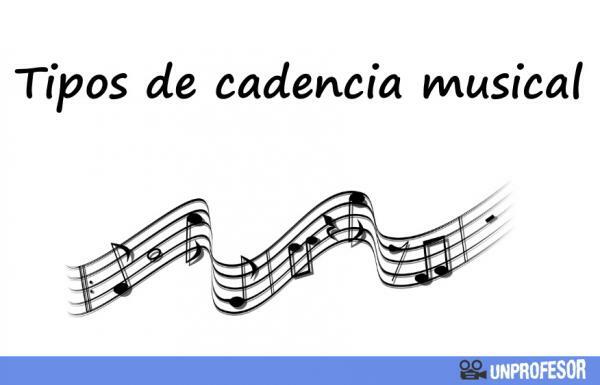
One of the undeniable qualities in art is the ability to create a discourse, a series of ideas that are intertwined to express a specific feeling. Thanks to the structure and forms of art as a communication method, we can establish an elegant way of getting our message across in the most sensitive way possible.
Music is one of those arts that allows us to understand on a sentimental level, this is largely due to the way so refinement that has to lead us almost unconsciously to understanding, in an almost mysterious way through the succession of sounds. In this lesson from a TEACHER we will talk about a component of music that allows us to achieve this: types of musical cadence.
Index
- What is a musical cadence
- The degrees of tonality in music
- The different types of cadence that exist
What is a musical cadence.
Music has the element of time, that is to say that it is not something static but quite the opposite, it changes as it passes and this is what makes it have so much life. Another crucial factor in music is the dynamics it causes in terms of perception of tension and resolution, it is say that aurally we have the feeling that when something is very dense, it should release that tension eventually. It is this liberation that is so pleasant to us in music and what makes it possible to pass in time, have cycles, evolution and thus create a discourse.
The word "cadence" comes from Italian and means "to fall". By this word we mean the aforementioned need for resolution. The structure of a musical work or song is built by a series of chordsin a certain order. Although this order is at the mercy of the composer, it is not a random sequence, since it is governed by the harmonic rules that give meaning to the music.
All chord progression must eventually end, lead somewhere and it is precisely the action of solving what we call “cadence”, it is the moment and chord in music in which a chord “falls”.
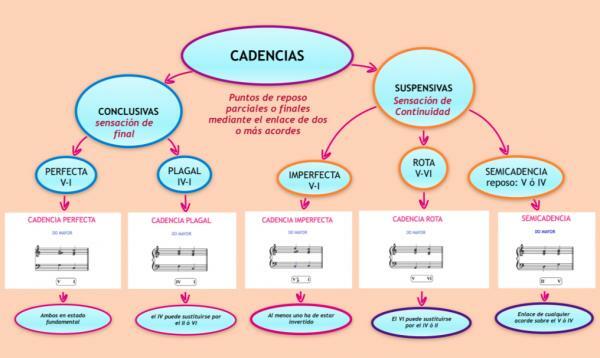
Image: Pinterest
The degrees of tonality in music.
Before knowing the types of cadence we must be very clear about the concept of degrees of hue and of course, of tonality itself.
In short, tonality is the rules that dictate the harmonic context, the notes that we can use in a composition. Thanks to these rules we are able to know what types of chords we can use and with this, we establish the degrees of tonality.
The degrees of tonality are found in the base scale we are using (example: major scale, minor scale, Doric scale... etc.) On a standard scale we have 7 notes, and therefore we get 7 degrees. Each of the degrees has a specific name according to its function, which is defined by the amount of tension or sense of resolution. These are the names of the degrees of tonality:
- (I) First degree: tonic (fundamental)
- (II) Second degree: supertonic
- (III) Third degree: through
- (IV) Fourth degree: subdominant
- (V) Fifth degree: dominant
- (VI) Sixth grade: superdominant (or submediate)
- (VII) Seventh grade: sensitive
The degree of resolution par excellence is the first degree, tonic or fundamental, since it provides us with the greatest sense of conclusion thanks to its harmonic stability.
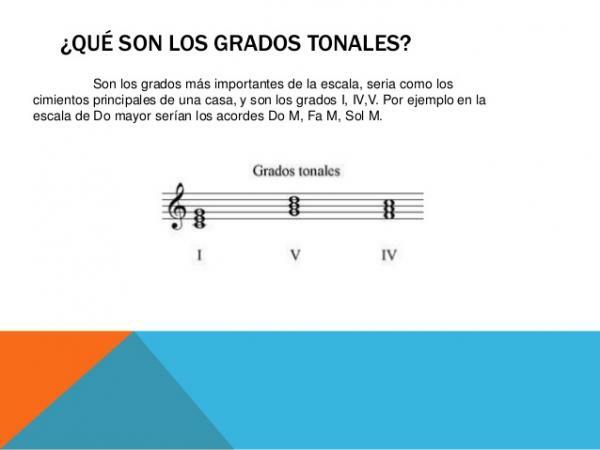
Image: Slideshare
The different types of cadence that exist.
There are many types of cadence since music is an art and depends on creativity. However, in the course of history, certain cadences have been used frequently thanks to their well-known functionality. There are two categories for cadences: conclusive cadences and suspensive cadences.
The conclusive cadences They are those that reach a resolution and therefore a clear completion. On the contrary, a suspension cadence It is one that does not provide a resolution and that causes the feeling that the sound must continue.
For both types of cadence there are some standard types.
Conclusive cadences
- Perfect cadence: It goes directly from the dominant (V) to the tonic (I).
- Imperfect cadence: It goes from the dominant (V) to the tonic (I) but the organization of the notes is reversed or the higher voice does not resolve to the first degree.
- Plagal cadence: It goes from the subdominant (IV) to the tonic (I).
- Compound cadence: Subdominant (IV) - dominant (V) - tonic (I) succession.
- Preclassic cadence: Subdominant sequence (IV) - dominant (V) - dominant octave and tonic (I).
Suspensive cadences
- Semi-demeanor: When there is a rest in the subdominant (IV) or dominant (V), but it does not resolve yet.
- Imperfect cadence: when in a perfect cadence the tonic chord occurs in a weak beat or if any of its chords are inverted (when the root note of the chord is not the lowest).
- Broken or deceptive cadence: when a cadence gives the feeling that it will resolve the tonic but instead that chord is replaced by a non-resolving degree.
With this knowledge of cadences, you already have an approach to the basics of music and its composition. Music is made up of many relationships that we must study little by little, in order to express ourselves properly in art.
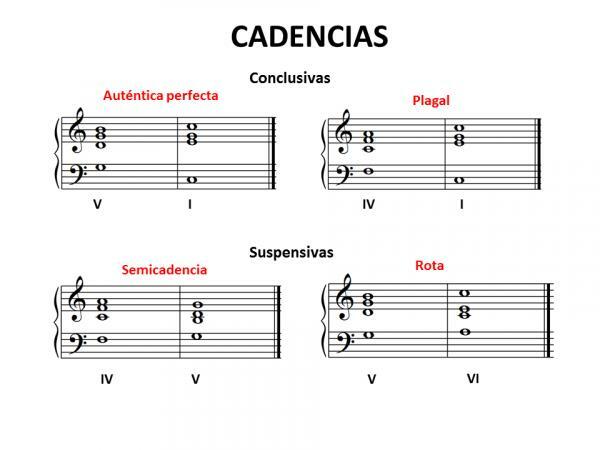
Image: Musicnet
If you want to read more articles similar to Types of musical cadence, we recommend that you enter our category of Musical language.

